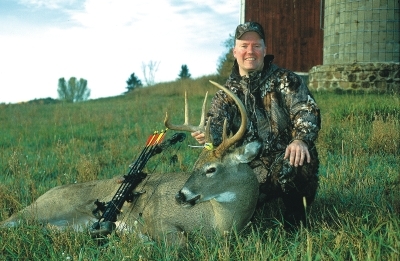We recently received this image of a deer in central Wisconsin with a pretty goofy-looking rack. What causes such an appearance? A traumatic injury can lead to what deer biologists call “the contralateral effect” in a white-tailed buck with one normal-looking antler and another odd-looking antler.

The contralateral effect happens after an injury to a velvet pedicle or another part of its body, which causes the antler on the opposite side of its body to grow abnormally. This is because the buck’s body chemistry takes over and redirects its energy to heal the injury. This is believed to be a survival mechanism.
These effects are not necessarily permanent according to our DDH field editors, but it depends on the extent of the injury. The late Charles Alsheimer once said that he had seen several deer recover from this condition and grow normal racks in later years. The venison on deer with the contralateral effect is safe to eat.
We’ve seen other deer in the past with this condition as well. A buck our Editor-in-Chief Dan Schmidt shot in 2003 had 5 points on one side and only 2 on the other.

The 4-1/2-year-old buck pictured above had a clean 5-point side and a 21-inch beam with only a brow tine on the other side. When he skinned this buck, he learned that his right hind leg had suffered a serious wound. A fist-sized ball of scar tissue was encased by a cyst on that leg. This injury undoubtedly led to the contralateral effect on that opposite antler.
Check out these other news stories:




